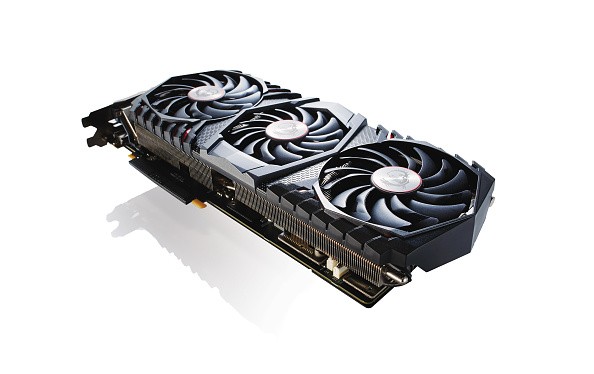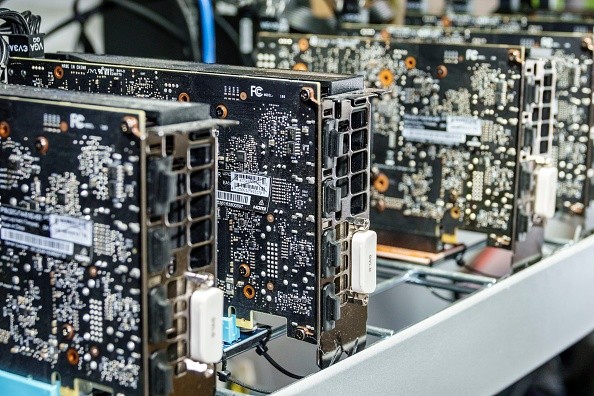Second-hand NVIDIA and AMD graphics cards will flood the market sooner or later. Massive changes have been going on in the cryptocurrency mining industry (miners have been selling off their inventory to try and recoup losses) and some supply improvements (however small) in terms of new GPUs being made.

An MSI GeForce GTX 1080 TI Gaming X Trio graphics card, taken on October 25, 2017.
Many tech-starved PC gamers are going to look at all the second-hand NVIDIA and AMD cards, especially those from the latest RTX 3000 and RX 6000 series. However, you still have to consider that the hardware was used for cryptocurrency mining. So, is it a good idea to buy one for gaming?
Second-Hand NVIDIA & AMD GPUs From Miners: The Basics
Any second-hand NVIDIA or AMD graphics card from a crypto-miner likely underwent 24/7 usage at full capacity. That's because any miner would always want to maximize their profit margins. A mining rig that isn't turned on isn't making them money, after all.
However, any graphics card that was previously used for mining isn't always going to die as soon as you buy it, writes Tom's Hardware. There's still a good chance that the miner who used it first took good care of the card because of profit margins. The longer they maintain the card at its peak performance, the more money it's going to make them.
But if you're seriously considering buying a second-hand AMD or NVIDIA card which was used for mining, here are some tips to ensure you're not getting ripped off.
Read also: GPU Shortage FINALLY ENDING? Asrock Believes Graphics Card Demand from Crypto Miners Will Drop
Make Sure That The Miner Took Good Care Of It
It's surprisingly easy to know if a cryptocurrency miner took great care of the card. Most of the signs are physical and thus easy to spot. So, upon buying a second-hand NVIDIA or AMD graphics card from a miner, be on the lookout for these types of physical damage:
- Dust buildup everywhere on the card
- Fans not spinning if the card is in use
- Broken LEDs that should be lighting up
- Corrosion on the contacts
Another question you can ask a crypto-miner involves software. Knowing how to extend the lifespan of a graphics card means you need to control these parameters via software such as MSI Afterburner:
- Was the temperature of the card well-maintained using custom fan curves?
- Was the card undervolted/underclocked?
- What were the average temperatures in a typical usage scenario?
- Was the card flashed with a mining-specific BIOS? A mining-specific BIOS could mean that the card's gaming performance will be way worse than expected.
Suppose a crypto-miner refuses to answer any or all of these questions concretely. In that case, it means they just installed the card onto a rig without tweaking any parameters to ensure that it runs in optimal condition. DO NOT BUY from a seller, especially a miner, if they fail to answer these questions adequately.

Miami Beach, bit coin crypto coin mining hardware.
Pricing Concerns
It's a bit hard to give an exact number when pricing second-hand NVIDIA and AMD GPUs. But there are certain things you can consider about second-hand prices.
Take an RTX 3060, for example. As a modern NVIDIA card with a price severely affected by the GPU shortage, you can expect to pay around $740 going by current pricing on eBay. Given that graphics cards lose around 10% of their performance on average due to crypto mining (according to Palit via PCGamer), don't accept a deal close to current street pricing (say, $50 less). Your ultimate goal is to get more or less the same gaming performance for at least $100 below current pricing for it to be a good deal.
Buying a second-hand NVIDIA or AMD GPU from a cryptocurrency miner will always be a risky deal. But if you follow this guide, you're not going to get ripped off, and that's a guarantee.
Related: GPU Price Drops Keep On Coming: Crypto Decline, New Chipmaking Fabs Causing the Change
This article is owned by Tech Times
Written by RJ Pierce












